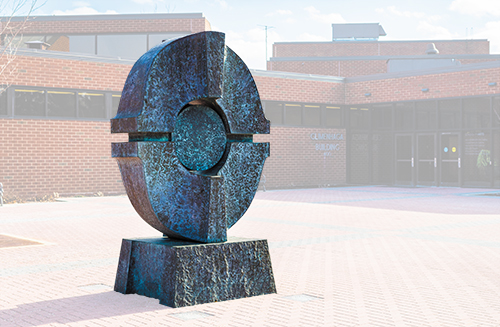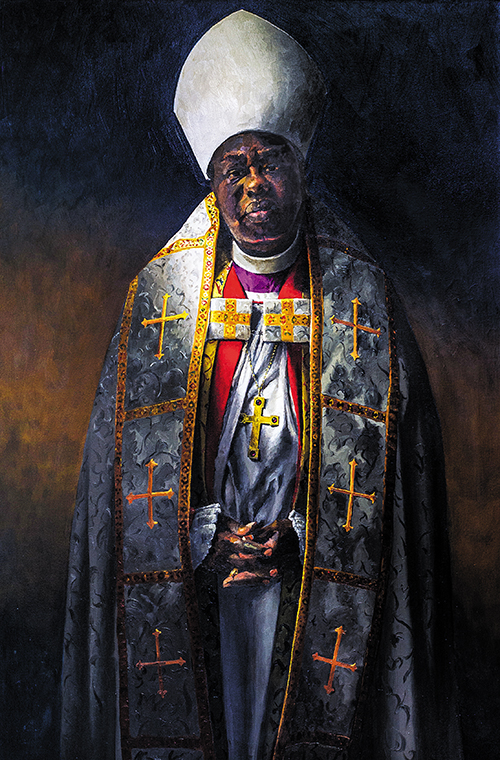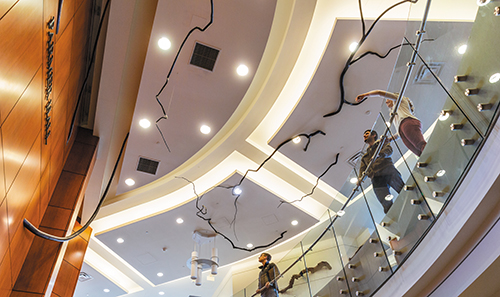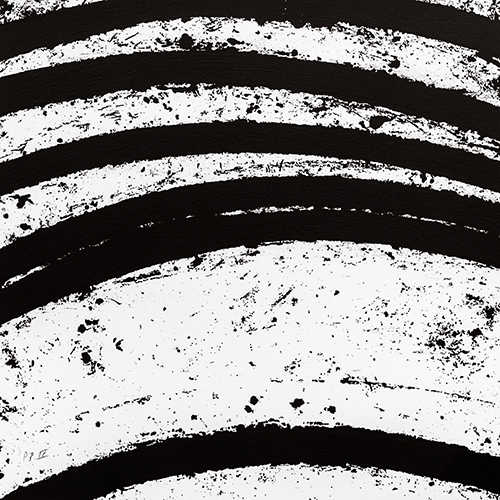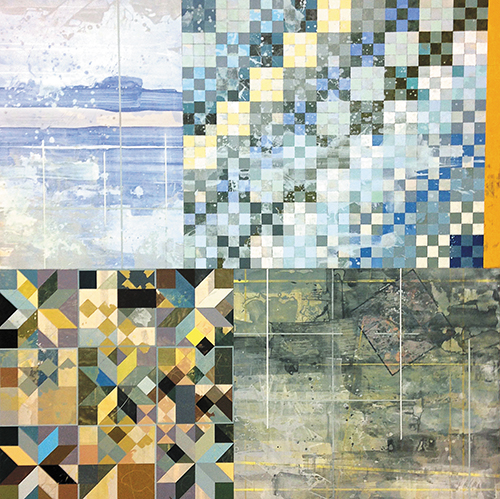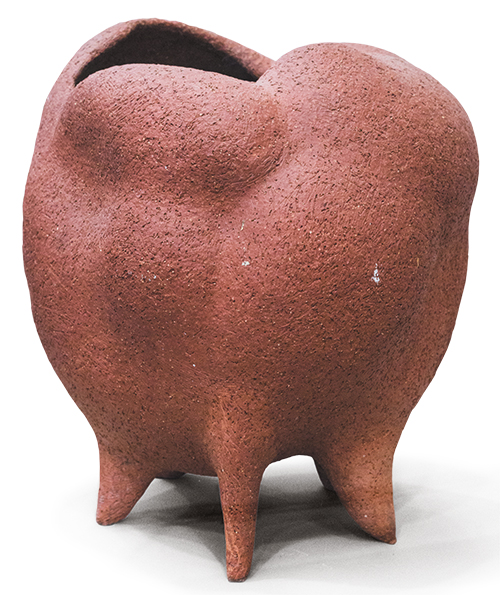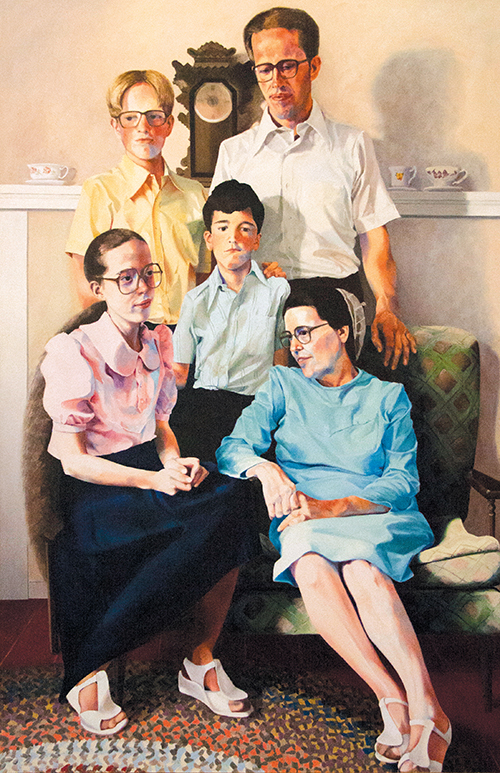Messiah’s permanent art collection serves as educational tool
As Messiah College’s permanent collection of art has grown during the past several decades, so has the visual arts program. The ultimate teaching tool, the permanent collection boasts more than 1,400 sculptures, illustrations, prints, paintings and more. How does a collection grow? It all started with one dean who liked oil painting.
As Messiah College’s permanent collection of art has grown during the past several decades, so has the visual arts program. The ultimate teaching tool, the permanent collection boasts more than 1,400 sculptures, illustrations, prints, paintings and more. How does a collection grow? It all started with one dean who liked oil painting.
Art with Asa: The Beginning
The first academic dean of what was then known as Messiah Bible School, Asa Climenhaga taught the first art classes in Grantham in 1911. An avid oil painter, he introduced generations of students to art. In the book “Messiah College: A History,” Morris E. Sider notes a recollection by a student:
“‘None of us,’ wrote Clara Stoner in 1922, ‘who have studied art under Prof. Climenhaga are entirely void of an appreciation of the beauty of hills, valleys, woods, streams, architecture.’”
This appreciation of landscapes can be found throughout the Climenhaga Homestead on campus. In the 1920s, Climenhaga and his wife Anna built the house next to the College. In 1968, the Climenhagas deeded the house and the bulk of his paintings to the College. The color of each room of the house is dictated by the respective oil painting hanging on its wall, a design effort curated by Lorna Sawatsky, wife of former President Rod Sawatsky. In essence, the rooms are built around the paintings.
“Most of his work is housed at the Climenhaga Homestead,” said Elizabeth Dubin, gallery director. “We can probably theorize the Homestead itself is a kind of work of art that he built by hand.”
Because of the Climenhagas’ passion for art and their generous donation, the College memorialized the couple by building a fine arts center in their name, paving the way for students to major in art.
Climenhaga Fine Arts Center
When Ted Prescott, now emeritus professor of art, arrived at Messiah in 1980, an art major on campus simply did not exist. Prescott’s primary role involved creating a visual arts major in Grantham. Climenhaga Fine Arts Center (now called Climenhaga Building) was under construction.
“Since there was no gallery space, there was no regular exhibition program,” explained Prescott.
After Climenhaga opened in 1981, two years before Asa Climenhaga’s death, the College started displaying art exhibitions in its new gallery, named for donor M. Louise Aughinbaugh.
“Louise Aughinbaugh was my friend and I had some very good times with her. She was a very successful milliner in Harrisburg in the days when all socialites wore hats,” said Audrey Hostetter, wife of D. Ray Hostetter, Messiah College’s president from 1964-1994. “Mrs. Aughinbaugh … soon realized we did not have a place to show the students’ art [at Messiah]. So Ray gave her a proposal to help build a gallery and give it her name. She loved the idea and … she was very proud on the day of the dedication.”
The mission of the gallery was to present the work of professional artists for community benefit and for the education of the few art majors Messiah had at the time.
“The roots of the collection are there because, in order to entice professional artists to exhibit, we generally bought work from the exhibitions,” said Prescott. “We were fortunate in personally knowing good artists to invite and also began to network through organizations like CIVA ( Christians in the Visual Arts ).”
One of those artists is Prescott’s wife Catherine, who taught drawing and painting for more than 20 years at Messiah as an adjunct. Her portraits, many of which are part of Messiah’s permanent collection, have been exhibited in the National Gallery of Art in Washington, D.C.
Only two years after the Prescotts arrived, another couple, Don and Christine Forsythe, joined the art department at Messiah.
Professor of Art Don Forsythe had worked with Ted Prescott previously at Roberts Wesleyan College in Rochester, New York. At Messiah, Professor of Art Christine Forsythe worked part-time for several years before becoming full-time, then serving as the chair for 15 years.
“Two married couples,” remembered Don Forsythe. “People referred to us as the mom-and-pop art department.”
Thirty-four years later as professors of art in the Department of Visual Arts, the Forsythes continue to work with students and to help build the permanent collection.
The next level
When the Calvin and Janet High Center for Worship and Performing Arts opened in 2013, the building heralded new opportunities for the School of the Arts as a whole—and a way to engage with the Messiah community at large. Housing studio and performance space for music, theatre and dance, the High Center also benefits the visual arts in the form of gallery space, allowing for the display of artwork in designated areas on the upper and lower levels.
Combined with the space in Climenhaga Building and President Kim Phipps’ residence Orchard Hill, Dubin stays busy. She continually installs new exhibits in the Aughinbaugh Gallery and moves pieces from the permanent collection around campus.
“We try and rotate exhibitions every six weeks or so during the school year and bring in a different artist,” said Dubin. “When a piece has been in the same place a while people don’t always see it, so we are very conscious about moving and rotating pieces around. I’ve noticed people walking by, stopping and having a conversation that would not have happened otherwise because of a piece of art that was recently placed there.”
As the visual arts program has grown, so have the facilities. In 2015, Frey Hall expanded its first floor to include a multi-use classroom textile studio, a printmaking studio and a senior studio for visual arts students.
While providing art throughout campus, the School of the Arts also participates in outreach programs such as Saturday Art School, in which children visit the campus studios for four consecutive Saturdays in the fall to try out different art forms such as painting and sculpture. Money raised from Saturday Art School is then used to partner with the art programs at local schools in need.
Education and community
In addition to starting conversations and engaging with the community, a permanent art collection is an essential teaching tool. The primary purpose of the collection always has been education.
“The bottom line reason we have a collection is that you simply can’t educate artists without them being able to be around, see and repeatedly engage ‘real’ work over time,” said Prescott. “A very close second reason is that the public display of art brings a specific presence to the community. That presence is often intangible, but it makes a qualitative impact on our spaces and the activities taking place in those spaces.”
That specific presence in the community brings with it opportunity for a shared experience and enrichment.
“Great art can often bring us together, at least for a moment,” said Richard Roberson, dean of the School of the Arts, “destroying the walls of hostility and misunderstanding that so often divide us, by transforming us through a common experience of hearing, seeing and understanding.”
